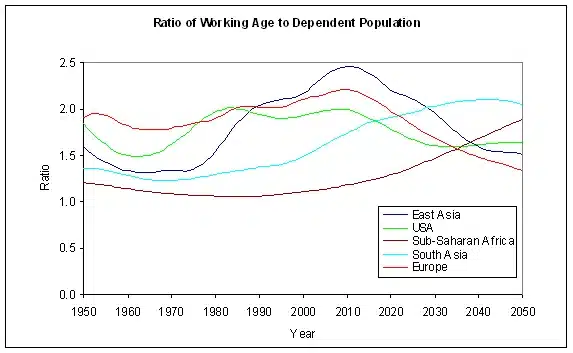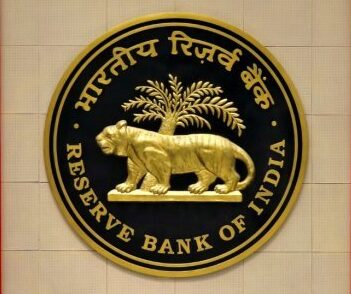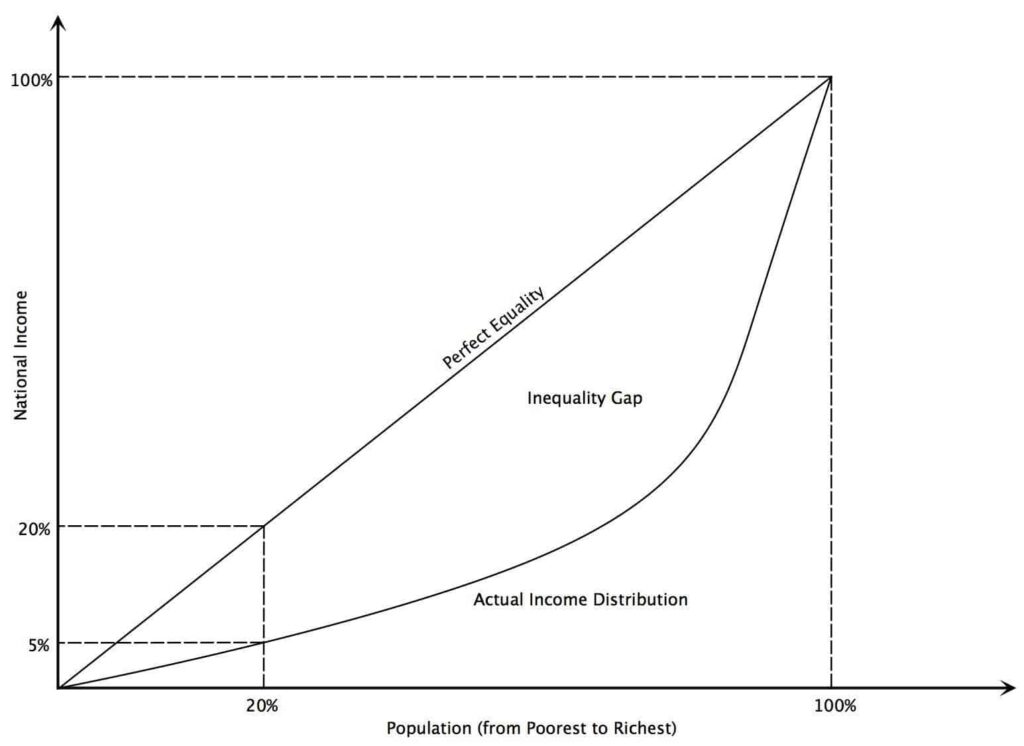Introduction of Bonds
A bond is a debt instrument in which an investor loans money to an entity (typically corporate or government) which borrows the funds for a defined period of time at a variable or fixed interest rate. Bonds are used by companies, municipalities, states and sovereign governments to raise money to finance a variety of projects and activities. Owners of bonds are debt holders, or creditors, of the issuer.
Explanation : Whenever Companies, Organizations or Governments need money they can go for a loan. This loan either they can borrow from the banks at their prevailing interest rates but may have to follow certain rules and provide certain collateral for getting those loans. Alternatively, they can also get loans in the form of Bonds. Companies or Governments sells the bonds to the Public in the market to get the required money. Banks also participate in case of Government Bonds.
Reason for Buying Bonds: One should be interested why anyone buys Bonds. The public may be interested in the interest which they earn on redeeming the Bonds while Banks have to meet their statutory requirements to meet their liquidity targets like SLR.
Important terms related to bonds :
- The interest rate is referred to as the coupon. The interest payment (the coupon) is part of the return that bondholders earn for loaning their funds to the issuer. The interest rate that determines the payment is called the coupon rate.
- The date on which the issuer must repay the amount borrowed also known as face value is called the maturity date.
- The face value (also known as the par value or principal) is the amount of money a holder will get back once a bond matures. It is also the money which bondholder lends to the Company.
- The company or the government who is borrowing money is called Issuer.
*Bonds can be traded between persons or entities. Bonds are either sold at a premium to the face value or at a discount.
Bonds at Premium:
- A premium bond is a bond trading above its face value or in other words; it costs more than the face amount on the bond.
- A bond might trade at a premium because its interest rate is higher than current rates in the market.
Example : The bond is issued at face value of 100000 at a coupon rate of 10% with maturity 10 years in future. Anyone who wanted to get a guaranteed return and fixed deposits in the bank was only offering 8%. Now suppose after 1 year the interest rate on fixed deposit decreases to 7%. Since the bond is valid for 10 years, he/she will get 10% interest even though fixed deposit would just give 7% return. Therefore, more people will become interested in buying bonds of 10 % interest rate and would be ready to pay you higher than the face value of Rs. 1000. In such a case the Bond gets sold at a premium meaning more than 100000.
Bonds at a Discount:
- A bond issued at a discount has its market price below the face value, creating a capital appreciation upon maturity since the higher face value is paid when the bond matures.
- The bond discount is the difference by which a bond’s market price is lower than its face value.
- Bonds are sold at a discount when the market interest rate exceeds the coupon rate of the bond.
Example : Let’s take the example of Bond at Premium. But after 1 year the interest rate on fixed deposit increases to 11%. Since the bond is valid for 10 years, he/she will get 10% interest even though the fixed deposit would give 11% return. Therefore, people will not be interested in buying bonds of 10 % interest rate and would not be ready to pay you higher but lesser than the face value of Rs. 1000. In such a case the Bond gets sold at a discount meaning less than 100000.
What is Yield?
- Yield: Yield is the return one gets on the Bond.
- Yield (coupon rate) = Coupon amount/Price
- In the beginning, when we buy the bond, the yield is equal to the interest rate but When the price changes, the yield also changes.
As bond prices increase, bond yields fall. For example, assume an investor purchases a bond that matures in five years with a 10% annual coupon rate and a face value of 1,000. Each year, the bond pays 10%, or 100, in interest. Its coupon rate is the interest divided by its par value.
Yield to Maturity:
Yield is the return we get as interest on the Bonds. If these interest payments are again invested in buying the bond then extra interest money is earned on the extra investments we make. In such a case the total yield or the total return is called yield to maturity.
* Yield can be understood as Simple interest while Yield to maturity is a compound interest.
Price and Yield and Interest Rate Relation:
- A decrease in Interest Rate Results in Increase in Bond Price and vice versa
- When price goes up, yield goes down and vice versa
- When interest rates rise, the prices of bonds in the market fall, thereby raising the yield of the bonds and When interest rates fall, the prices of bonds in the market rise, thereby decreasing the yield of the older bonds.
Different Types of Bonds

Government Securities Bond (G-Sec)
The Government securities bond is a debt instrument issued by the central and state government of India. The government (Central and/or State) issues this bond when it is facing a liquidation crisis and requires funds for the development of the country. Government bonds are likely to be a contract between the government and the investor in exchange for predetermined interest on bonds.
- A Government Security (G-Sec) is a tradeable instrument issued by the Central Government or the State Governments. It acknowledges the Government’s debt obligation.
- Such securities are short term (usually called treasury bills, with original maturities of less than one year) or long term (usually called Government bonds or dated securities with original maturity of one year or more).
- In India, the Central Government issues both, treasury bills and bonds or dated securities while the State Governments issue only bonds or dated securities, which are called the State Development Loans (SDLs).
- G-Secs carry practically no risk of default and, hence, are called risk-free gilt-edged instruments.
Why should one invest in G-Secs?
Holding of cash in excess of the day-to-day needs (idle funds) does not give any return. Investment in gold has attendant problems in regard to appraising its purity, valuation, warehousing and safe custody, etc. In comparison, investing in G-Secs has the following advantages:
- Besides providing a return in the form of coupons (interest), G-Secs offer the maximum safety as they carry the Sovereign’s commitment for payment of interest and repayment of principal.
- They can be held in book entry, i.e., dematerialized/ scripless form, thus, obviating the need for safekeeping. They can also be held in physical form.
- G-Secs are available in a wide range of maturities from 91 days to as long as 40 years to suit the duration of varied liability structure of various institutions.
- G-Secs can be sold easily in the secondary market to meet cash requirements.
- G-Secs can also be used as collateral to borrow funds in the repo market.
- Securities such as State Development Loans (SDLs) and Special Securities (Oil bonds, UDAY bonds etc) provide attractive yields.
- The settlement system for trading in G-Secs, which is based on Delivery versus Payment (DvP), is a very simple, safe and efficient system of settlement. The DvP mechanism ensures transfer of securities by the seller of securities simultaneously with transfer of funds from the buyer of the securities, thereby mitigating the settlement risk.
- G-Sec prices are readily available due to a liquid and active secondary market and a transparent price dissemination mechanism.
- Besides banks, insurance companies and other large investors, smaller investors like Co-operative banks, Regional Rural Banks, Provident Funds are also required to statutory hold G-Secs
SDLs Bonds
- State Development Loans (SDLs) are dated securities issued by states for meeting their market borrowings requirements.
- In effect, the SDL are similar to the dated securities issued by the central government.
- Purpose of issuing State Development Loans is to meet the budgetary needs of state governments.
- Each state can borrow upto a set limit through State Development Loans.
Municipal Bonds
- Municipal bonds are also referred to as ‘muni bonds’. The urban local government and agencies issue these bonds.
- Municipal bonds are issued when a government body wants to raise funds for projects such as infra-related, roads, airports, railway stations, schools, and so on.
- Municipal bonds exist in India since the year 1997.
- Bangalore Municipal Corporation is the first urban local body to issue municipal bonds in India. Ahmedabad followed Bangalore in the succeeding years. The municipal bonds lost the ground after the initial investors’ attraction it received and failed to raise the desired amount of funds.
- To revive the municipal bonds, the market watchdog SEBI came up with guidelines for the issue of municipal bonds in 2015.
Zero-Coupon Bonds:
- Not all bonds have coupon payments. Such bonds are referred to as zero-coupon bonds.
- A zero-coupon bond is purchased at a discount price and does not pay any periodic interest rates to the fund holder. This bond is also known as the pure discount bond. Money invested here does not offer a regular interest rate till the bond gets mature.
- The difference between the purchase price and the par value represents the investor’s return.
- The payment received by the investor is equal to the principal invested plus the interest earned.
Perpetual Bonds
- These are bonds with no maturity date. They don’t expire. The investor doesn’t get the principal he invested as such, but he gets it in the form of higher interest rates.
- There are very few people who opt for it as no one can guarantee such an infinite time for any entity.
- Example :
- AT1 Bonds stand for additional tier-1 bonds. These are unsecured bonds that have perpetual tenure. In other words, the bonds have no maturity date.
- They have a call option, which can be used by the banks to buy these bonds back from investors.
- These bonds are typically used by banks to bolster their core or tier-1 capital.
- AT1 bonds are subordinate to all other debt and only senior to common equity.
- Mutual funds (MFs) are among the largest investors in perpetual debt instruments.
Inflation-Linked Bonds
Inflation Indexed Bonds (IIBs) – IIBs are bonds wherein both coupon flows and Principal amounts are protected against inflation.
- This bond provides protection against inflation and is designed to cut out the inflation risk of an investment.
- It is primarily issued by the government.
- Inflation-linked bonds are indexed to inflation so that principal and interest rates rise and fall with the rate of inflation.
- Globally, IIBs were first issued in 1981 in UK. In India, Government of India through RBI issued IIBs (linked to WPI) in June 2013. Since then, they were issued on monthly basis (on last Tuesday of each month) till December 2013. Based on the success of these IIBs, Government of India in consultation with RBI issued the IIBs (CPI based) exclusively for the retail customers in December 2013.
Sovereign Gold Bond (SGBs)
- This bond is issued by the central government of India for those who wish to invest in gold but do not wish to keep the gold in physical form with them.
- The interest earned from this bond is exempted from tax.
- It is also considered as a highly secured bond as it is offered by the government.
- According to RBI regulations, there are various concerns regarding Sovereign Gold Bond for different entities:
- SGBs up to 4 kg can only be held up by individuals and HUF (Hindi Undivided Family) in a financial year.
- SGBs up to 20 kg can be held by the trusts and other relevant entities in a financial year.
Market Stabilization Bonds
- MSS (Market Stabilisation Scheme) securities are issued with the objective of providing the RBI with a stock of securities with which it can intervene in the market for managing liquidity.
- The Reserve Bank under Governor YV Reddy initiated the MSS scheme in 2004.
- These securities are issued not to meet the government’s expenditure.
- These are mostly shorter-tenure bonds, of less than six months maturity. But the tenure differs depending on the requirement.
- The bonds issued under MSS have all the attributes of the existing treasury bills and dated securities.
- These securities will be issued by way of auctions to be conducted by the RBI.
- The money obtained under MSS should be kept with the RBI in a separate account called MSS Account. It should not be transferred to the government. This is because, if it is transferred, government will spend the money in the economy thereby adding to liquidity.
- Interest payments have to be given to the institutions who buys bond. Here, for the interest payment, the government allocates money from its budget to the RBI. This expenditure to service interest payment for MSBs is called carrying cost.
Masala Bonds
- These are the bonds issued outside India, by an Indian entity, in Indian currency
- The major objectives of Masala Bonds are to fund infrastructure projects, ignite internal growth (via borrowings) and internationalise the Indian rupee
- In case of any risk, the investor has to bear the loss and not the borrower
- The first Masala Bonds were issued by World Bank in 2014 to fund an infrastructure project in India
- The International Finance Corporation (IFC), the investment branch of the World Bank issued a 10-year, 10 billion Indian rupee bonds in November 2014 to increase foreign investment in India and mobilise international capital markets to support infrastructure development in the country
- There are certain rules and regulations which have been set up by the Reserve Bank of India (RBI) regarding Masala Bonds:
- Any corporate and Indian bank is eligible to issue Rupee denominated bonds overseas
- Money raised through these bonds cannot be invested in real-estate activities. However, they can be used for the development of integrated township or affordable housing projects
- Also, the money raised through Masala Bonds cannot be invested in capital markets
Benefits of Masala Bonds
- Masala bonds have opened up an investment route for global investors who have no access to the domestic market through the Foreign Institutional Investor (FII) or Foreign Portfolio Investment (FPI) route
- The documentation work is also less as the registration does not have to be made as FPI in India
- For borrowers, it is beneficial as the cost of funds is cheaper and is issued below 7% interest rate
- The companies issuing these bonds do not have to worry about the depreciation of rupee
- Since, the interest rates in the US dollar, pound sterling, euro, and yen, are at very low levels, it benefits Indian companies to raise funds via issuing Masala Bonds
- It is an easy medium to internationalise Indian rupee by making it familiar to the International investors
- It will also boost the development of domestic bond markets due to competition with overseas market
Limitations of Masala Bonds
- RBI has been making periodical rate cuts in Masala Bonds which has made it a bit less appealing to the investors
- The money raised through these bonds cannot be used everywhere. There are fixed fields where the money can be invested
- As per Moody’s, the sustainability of financing via Masala Bonds is a challenge as investors are expected to be cautious in taking on currency risks from emerging markets
NRI Bonds
- These are bonds issued by the Reserve Bank of India to non-resident Indians who are interested in investing their money in India. Since these bonds offer higher returns than other similar investments, they can be used as a tool to attract capital during times when other domestic assets fail to attract the interest of foreign investors. Many investors view them as a safe investment as these bonds are issued by the Indian central bank.
- With the declaration of the government securities opened to NRIs, RBI introduced a separate route ‘Fully Accessible Route’. This is for the NRIs to invest in the government securities in the form of bonds for NRIs.
- With effect from 1st April 2020, NRIs are eligible to invest in governments bonds for NRI in India without any ceiling limit in certain specific instruments.
Corporate Bonds
When a company borrows money from investors for a fixed tenure and offers them a predetermined interest rate throughout the tenure, it is known as a corporate bond.
- A company can issue bonds just as shares.
- Generally, a short-term corporate bond is less than five years; intermediate is five to 12 years, and long term is over 12 years.
- Corporate bonds are characterized by higher yields because there is a higher risk of a company defaulting than a government.
- Corporate bonds include convertible bonds, which the holder can convert into stock, and callable bonds, which allow the company to redeem an issue before maturity.
Convertible Bond
- A convertible bond is a type of hybrid bond that offers the dual features of debt and equity to its bondholders, but not at the same time.
- This bond allows investors to convert their bonds into a predetermined number of regular stocks and become a shareholder of the company and gets all the benefits that a shareholder gets.
- The investors get an opportunity to take advantage of both debt and equity instruments after investing in convertible bonds.
Other Classification of Bonds
- Fixed Rate Bonds – These are bonds on which the coupon rate is fixed for the entire life (i.e. till maturity) of the bond. Most Government bonds in India are issued as fixed rate bonds.
- Floating Rate Bonds (FRB) – FRBs are securities which do not have a fixed coupon rate. Instead it has a variable coupon rate which is re-set at pre-announced intervals (say, every six months or one year). FRBs were first issued in September 1995 in India.
- Example : The floating rate saving bonds 2020 (FRSB) issued by the RBI is also known as RBI Taxable bonds. This bond has a tenure of 7 years, and the interest rate keeps varying during the tenure of the scheme.
- Mortgage Bond: The bonds which are backed up by the real estate companies and equipment are called mortgage bonds.
- Bonds with Call/ Put Options – Bonds can also be issued with features of optionality wherein the issuer can have the option to buy-back (call option) or the investor can have the option to sell the bond (put option) to the issuer during the currency of the bond.
- Subordinated Bonds : The Bonds which are at the bottom of the priority table compared to other bonds of the company in case there is a lockdown are called subordinated bonds. If we consider the case of liquidation then subordinated bonds are given less importance as compared to senior bonds which are paid first.
- Bearer Bonds : Bearer Bonds do not carry the name of the bond holder and anyone who possesses the bond certificate can claim the amount. If the bond certificate gets stolen or misplaced by the bond holder, anyone else with the paper can claim the bond amount.
- War Bonds : The bonds issued by any government in case of a war are known as war bonds.
- Serial Bonds : Bonds that mature over a period of time in instalments are known as serial bonds.
- Traditional Bond: A bond in which the entire principal can be withdrawn at a single time after the bond’s maturity date is over is called a Traditional Bond.
- Extendable Bonds: The bonds which allow the Investor to extend the maturity period of the bond are called Extendable Bonds.
- Climate Bonds : The bonds issued by any government to raise funds when the country faces any adverse changes in climatic conditions are known as climatic bonds.
- Green Bonds : A green bond is a debt instrument with which capital is being raised to fund ‘green’ projects, which typically include those relating to renewable energy, clean transportation, sustainable water management etc.
- Bonds traditionally paid a fixed interest rate (coupon) to investors.
Alse refer :








